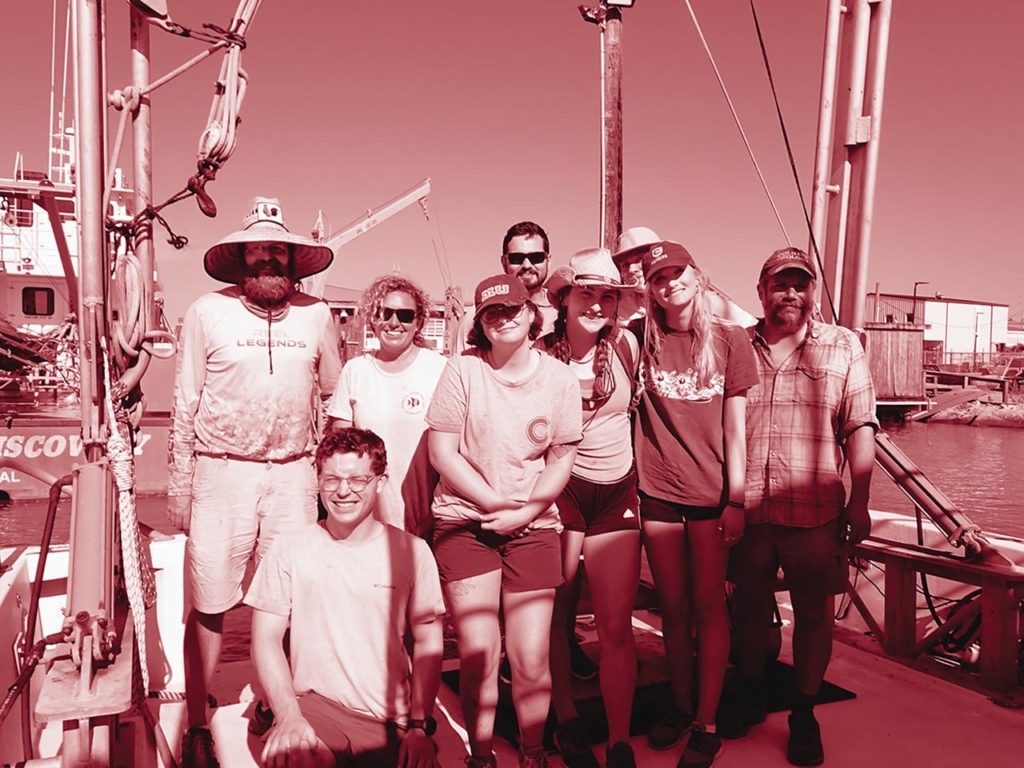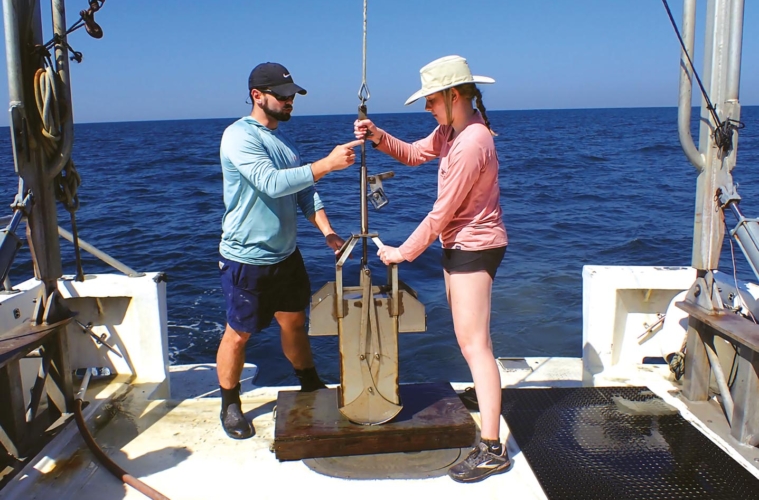To understand the effects of anthropogenic environmental changes on coastal ecosystems and their inhabitants, Professor Paul Harnik and five students embarked on an ambitious research trip to the Gulf of Mexico from May 22 to June 9.
The primary objective was to investigate how climate change and nutrient pollution in coastal environments in Louisiana and Alabama have impacted the biodiversity of marine communities and species’ ability to adapt to these changes. These coastal environments were not systematically studied before the 1970s when monitoring efforts began. Harnik and his team aim to fill the knowledge gap by examining historical data from these settings.
“Humans have been interacting with coastal environments since our species evolved many millennia ago, so it’s hard to figure out to what extent we are changing our coasts if we don’t know what they were like at different points in the past,” says Harnik, assistant professor of earth and environmental geosciences. “Our goal is to use the tools of paleontology to fill in these gaps in the record.”
The team collected sediment samples from the seafloor by working from boats off the coast of Louisiana and Alabama in collaboration with marine labs in each region. The process involved a meticulous approach. First, the team utilized a box core, a metal structure with weights, which was dropped onto the seafloor. Then, once retrieved, the sediment was carefully sifted through to separate living organisms from the remnants of past populations. And finally, these collected samples were brought back to campus for further analysis.
By analyzing these samples, the team will begin to unravel how marine species have responded to warming, nutrient pollution, and deoxygenation over time, offering insights into the future of coastal ecosystems in the face of ongoing human activities.
“In the sediment that we draw up from the ocean floor, you have both living organisms as well as empty shells, the ghosts of populations past, who could have lived anywhere from yesterday to several thousand years ago,” Harnik explains. “By comparing and analyzing these two groups, we can begin to disentangle how those creatures are experiencing changing conditions as a result of human activities.”
Through analyses of these samples new and old, Harnik and his team can glean everything from how biodiversity and food webs have changed over time to how the chemistry of their shells records the environment in which they lived and how that environment has changed. These discoveries then equip the researchers with the tools necessary to more accurately predict how coastal ecosystems will change under future warming and ongoing human activities.
The student researchers played a crucial role in this research process, engaging in everything from data collection to analysis to the generation of their own datasets. “It was incredible to learn about marine organisms while actually seeing them in real life after having helped to collect them,” Ryan D’Errico ’25 says. “This hands-on experience in the field has made sorting and analyzing the samples in the lab feel more real, as I had a connection to the place [from which] the clams under the microscope originated.”
Working on the water for prolonged periods also had its share of challenges, including unexpected weather and seasickness. Thankfully, Harnik, who has been conducting these trips for many years, has a number of countermeasures — everything from positive affirmations to recommendations for seasickness medications.
Above all, Harnik encourages the students to support one another and foster a sense of community within the lab. “The best way to produce good scientific work is by first looking out for one another’s well-being and staying engaged,” he says.
Alexa Russo ’25, who has been working in Harnik’s lab for nearly two years, adds: “When you’re on a boat in the middle of the ocean with the sun beating down on you, it’s easy to shut down, but Professor Harnik was able to help us develop ways to communicate,” she says.
By the time students returned home, they had a newfound understanding of and appreciation for our ocean ecosystem and the skills to continue learning about it further. Harnik emphasizes the importance of exploring these questions about human-ocean interactions and their impact on our planet, regardless of where you live. “Whether you’re in Hamilton or the Gulf Coast, everything is linked to our ocean ecosystems,” he says. “It is a privilege to be able to study such a vast and important topic and also a responsibility. We must use the knowledge that we gain to contribute to the welfare of human communities and the ecosystems that we depend upon.”


